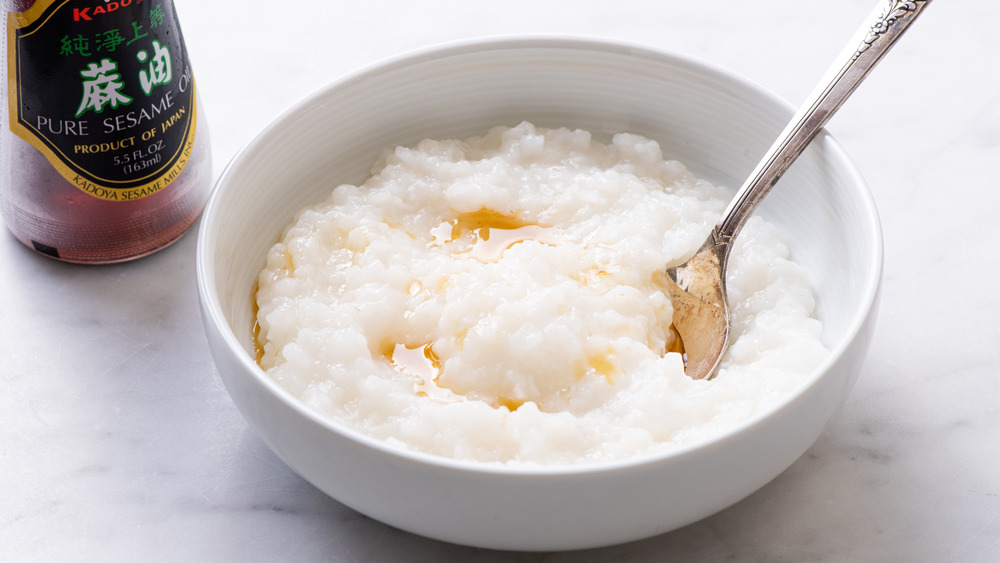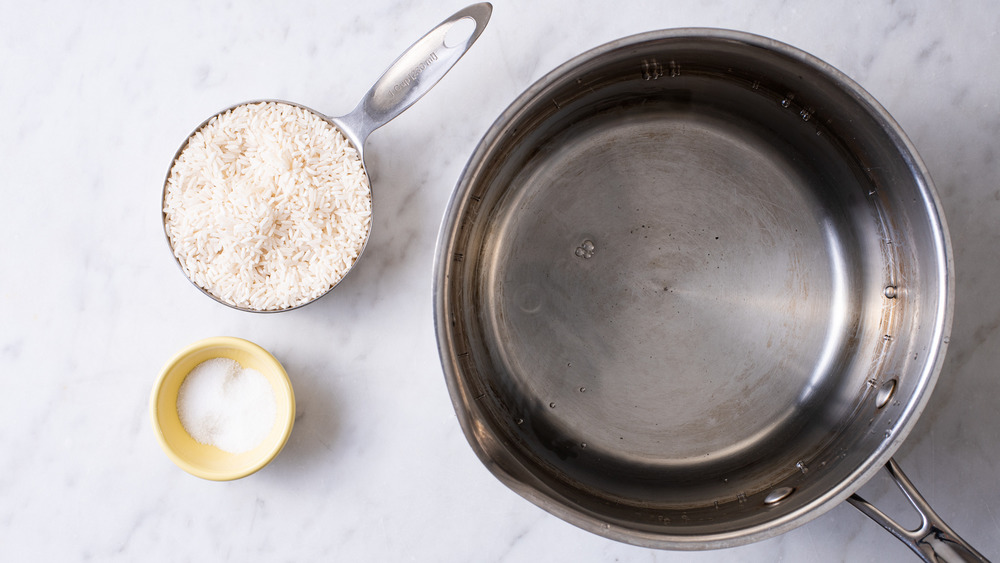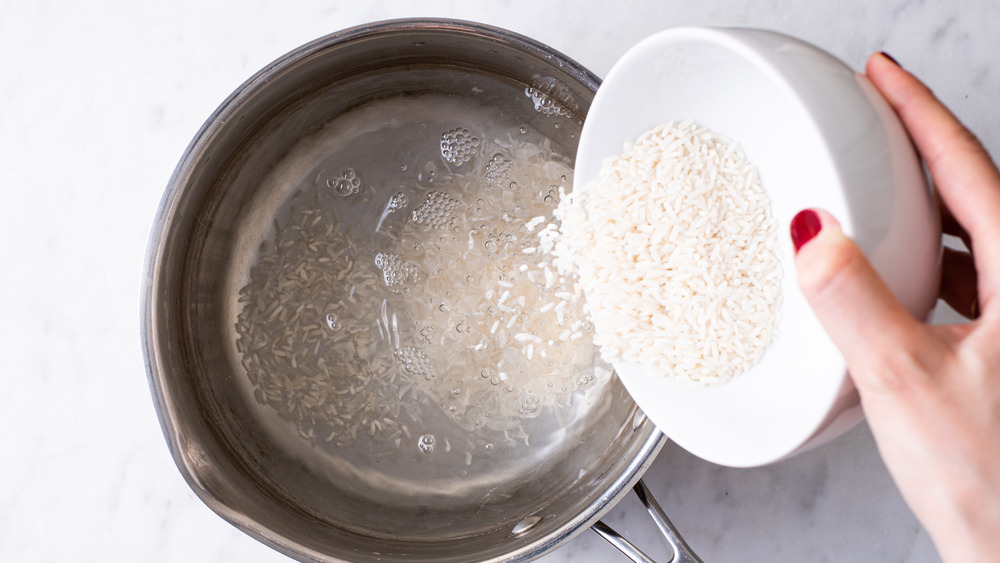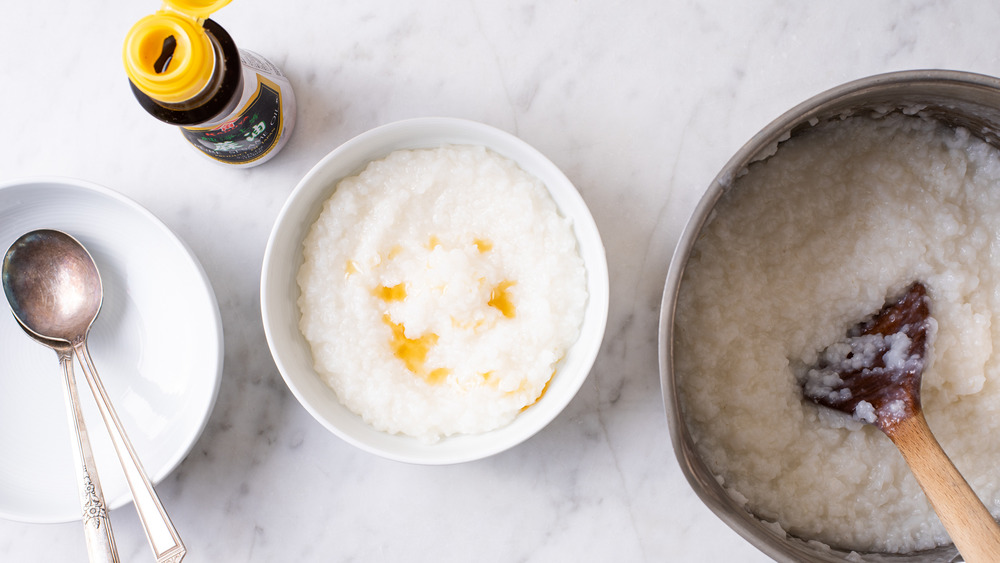Congee Recipe
If you've never had congee before, prepare your mind to be blown. This cozy and incredibly simple-to-make dish is sure to become a staple in your kitchen.
Congee is a creamy rice porridge of Chinese origin that dates back centuries. It's consumed in many places in Asia, as well as in other parts of the world. In its most basic form, congee is just rice and water, simmered together for a long time, creaming a creamy, viscous porridge.
Congee is typically eaten for breakfast during the colder months. It's also a meal of choice for those who are sick or feeling under the weather. This is likely because white rice is satiating yet easy on your digestion. But also, there's just something so primally comforting and nourishing about a creamy, warming porridge when you're not feeling your best.
The great news is that you don't have to get sick to enjoy the magic of congee. It's the perfect one-bowl meal that can be topped with any number of savory add-ons, including soft-boiled eggs, shiitake mushrooms, and scallions. Toasted sesame oil and soy sauce are a must.
Find more healthy recipes from Alexandra Shytsman on her plant-based recipe site, The New Baguette.
Gather your ingredients to make this congee
You only need three ingredients to make congee: long-grain white rice, water, and salt. This basic style of congee is a blank canvas for any toppings your heart desires.
If you want a congee with more personality and substance, switch out the water for beef, chicken, or mushroom broth. Congee cooked in broth will be more flavorsome and savory than that cooked in water. Sometimes, bone-in chicken or sautéed pork are also added to the cooking liquid.
If you want to make your congee a little healthier, use brown rice instead of white.
Cook the congee
Combine the rice, water, and salt in a pot. Choose a pot with a heavier bottom (to help prevent rice from sticking).
Cover the pot with a lid and bring the mixture to a boil. After it comes to a boil, reduce the flame to a bare minimum, and simmer the congee — with the lid ajar — until it becomes thick and creamy. This should take about an hour.
Don't forget to stir the congee frequently while it's simmering — every eight to ten minutes or so. This is important so the rice cooks evenly and doesn't stick to the bottom.
Serve the congee
You can make your congee as plain or as fancy as you want it to be. We recommend a combo of toasted sesame oil and soy sauce as a starting point. The oil adds a nutty warmth and richness, while the soy sauce adds saltiness and umami (savoriness).
To make your congee into a heartier meal, we recommend topping it any of the following: scallions, seven-minute eggs, seared tofu, sautéed shiitake mushrooms, sautéed greens, fried shallots, crumbled nori, and/or sesame seeds.
Freshly cooked congee has a creamy porridge consistency. After it cools, it will firm up a bit, but will still be just as delicious. Cooked congee can be stored in the fridge for up to five days.
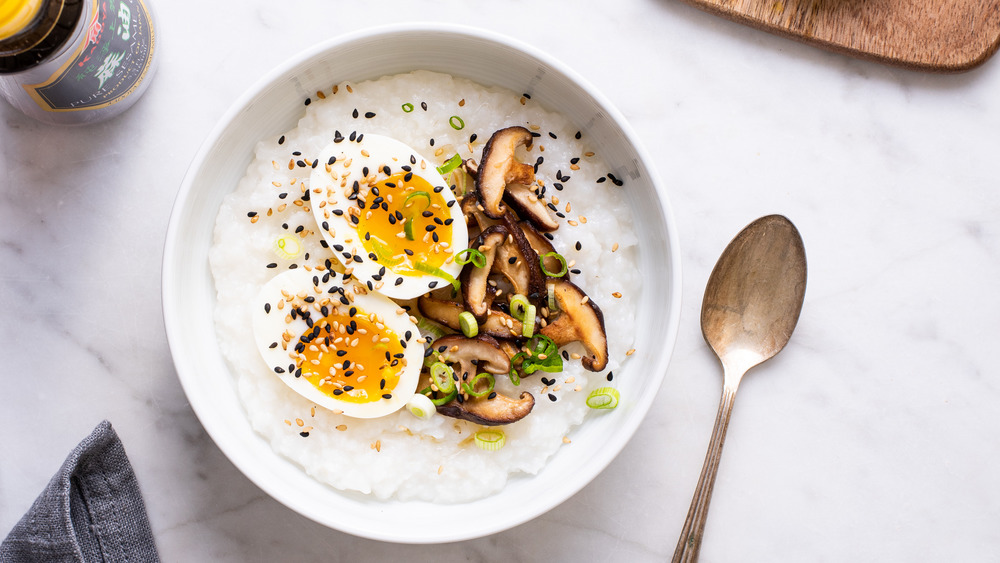
- 1 cup long-grain white rice
- 7 cups water or broth of your choice
- 1/2 teaspoon fine sea salt or more to taste
- Toasted sesame oil
- Soy sauce
- Scallions
- Sautéed shiitake mushrooms
- Soft-boiled egg
- Sesame seeds
- In a medium pot, combine the rice, water, and salt. Cover and bring to a boil.
- Reduce the heat to very low and simmer with the lid ajar until the congee is thick and creamy. Stir frequently so the rice doesn't stick to the bottom.
Nutrition
| Calories per Serving | 39 |
| Total Fat | 0.1 g |
| Saturated Fat | 0.0 g |
| Trans Fat | 0.0 |
| Cholesterol | 0.0 mg |
| Total Carbohydrates | 8.6 g |
| Dietary Fiber | 0.0 g |
| Total Sugars | 0.0 g |
| Sodium | 68.4 mg |
| Protein | 0.7 g |
